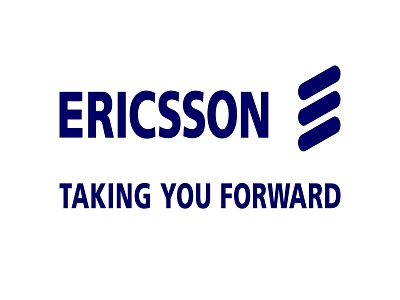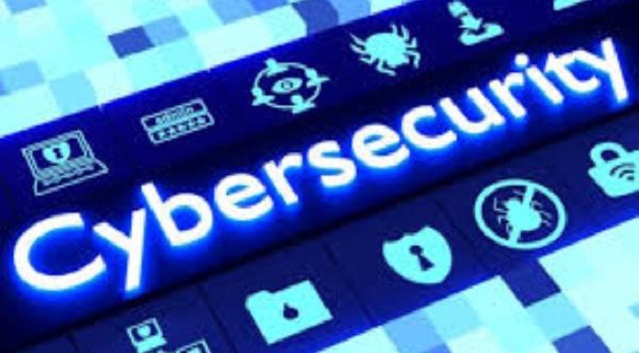E-Business
Ericsson Releases 10 Hot Consumer Trends 2014

With 2013 winding up, Ericsson ConsumerLab has identified the hottest consumer trends for 2014 and beyond. For more than 15 years, ConsumerLab has conducted research to explore people’s values, behaviors and ways of using ICT products and services.
Its global research program is based on annual interviews with over 100,000 individuals in more than 40 countries and 15 megacities.
Michael Björn, head of research at ConsumerLab, said: “The most important trend we see is the mass demand for apps and services across all industries and societal sectors – which has the potential to fundamentally change everyday life.”
1. Apps change society. The fast global uptake of smartphones has completely changed the way we communicate and use the internet. Now we enter a new phase of rapidly-diversifying smartphone use – and people are looking for apps across all sectors of society. This includes everything from shopping and daycare to communication with authorities, and transportation. Apps are becoming more important than what phone you use.
2. Your body is the new password. Sites are demanding longer passwords with a mixture of numbers, letters and symbols – almost impossible to remember. This is leading to growing interest in biometric alternatives. For example, our research found that 52 percent of smartphone users want to use their fingerprints instead of passwords and 48 percent are interested in using eye-recognition to unlock their screen. A total of 74 percent believe that biometric smartphones will become mainstream during 2014.
3. The quantified self. Blood pressure, pulse and steps are just some examples of how we want to measure ourselves with mobile devices, using personally-generated data. You only need to start an app to track your activities and get to know yourself better. A total of 40 percent of smartphone users want their phone to log all of their physical activities and 56 percent would like to monitor their blood pressure and pulse using a ring.
4. Internet expected everywhere. Internet experience has been falling behind voice; smartphone users are realizing that the signal bars on their phone no longer provide reliable guidance, since a signal that is adequate for a voice call may not be good enough for internet services. Our research found that the lowest satisfaction is with the internet quality experienced on the subway.
5. Smartphones reduce the digital divide. Internet access on a global scale is still inadequately and unequally distributed, giving rise to what is referred to as the digital divide. The advent of cheaper smartphones means that consumers no longer need costly computing devices to access internet services. A total of 51 percent of consumers globally feel that their mobile phone is the most important piece of technology – and for many it is becoming the primary device for internet use.
6. Online benefits outweigh concerns – As the internet becomes an integrated part of our daily lives, the risks associated with being connected are becoming more apparent. 56 percent of daily internet users are concerned about privacy issues. However, only 4 percent say that they would actually use the internet less. Instead, consumers apply strategies to minimize risk such as being more cautious about the type of personal information they provide.
7. Video on command. Despite having greater media choice, we seem less prone to choose what we watch ourselves. In fact, our friends are particularly influential when it comes to viewing video material. We found that 38 percent of respondents say they watch video clips recommended by their friends at least several times weekly. Our friends have almost as much impact on our blog-reading and music-listening habits too.
8. Making my data visible. A total of 48 percent of consumers use apps to better understand their data consumption. While 41 percent just want to know how much data they use, 33 percent want to make sure they are billed correctly and 31 percent don’t want to exceed their operator’s data cap. Research also revealed that 37 percent of smartphone owners regularly use apps to test their connection speed.
9. Sensors in everyday places. As interactive internet services are now commonplace, consumers are increasingly expecting our physical surroundings to be equally responsive. By the end of 2016, around 60 percent of smartphone owners believe that sensors will be used in everything from healthcare and public transport, to cars, homes and our places of work.
10. Play, pause, resume elsewhere. As 19 percent of total streamed time is spent on phones or tablets, consumers are increasingly shifting the locations where they watch TV to suit their daily lives. For example they might start viewing content at home, pause it, and resume watching during their commute to work. When changing places, it can also make sense to switch device.
E-Business
Africa Tasked to Fast-track AI Skills Development

Africa has been urged to fast-track the development of Artificial intelligence (AI) skill to benefit from its economic value. AI could contribute $1.5 trillion to Africa’s economy by 2030 if the continent secures 10% of the global AI market, according to SAP, which sourced the statistic from online media.

However, a shortage of AI talent, with the need to retain cyber security and cloud skills, threatens to block opportunities to monetise growth.
This is part of a report released by SAP: ‘Africa’s AI Skills Readiness Revealed’, which reveals that African organisations are rushing to enhance their traditional IT skills base in the wake of accelerating adoption of AI.
The report adds that while 94% of organisations offer monthly AI training, none currently allocate more than 10% of their HR or IT budgets to skills development, a sharp decline from 2022.
Genevieve Koolen, HR director at SAP Africa, said: “There is a near-universal need for AI-related skills among African companies this year. Since traditional IT skills such as cloud and cyber security related competencies remain in high demand, companies now face the dual challenge of attracting and retaining traditional tech talent while also building greater AI competencies within their businesses. It is unsurprising then that most African organisations provide career development opportunities for employees with AI specialisations.”
The report reveals that all companies surveyed expect the demand for AI skills to increase in 2025. Nearly half said they expect a ‘significant’ increase.
Koolen added that while there is an urgent need for policymakers and education institutions to fast-track AI skills development initiatives among Africa’s swelling youth population, companies also face pressure to equip existing workers with future-ready skills.
“Thirty-eight percent of companies surveyed said reskilling of employees is a top skills-related challenge for them in 2025, and nearly half said the same of upskilling. The impact of these changes creates its own challenges, as evidenced by the two-thirds of companies that said helping employees understand why reskilling is necessary is a top priority.”
Research also showed that African organisations are alive to the possibilities presented by AI-related innovation, with companies citing perceived value in improved decision-making (64%), marketing capabilities (51%) and innovation (47%) enabled by AI.
However, poor access to AI-ready skills is already causing negative impacts among the same companies, including failed innovation initiatives, delays completing projects, greater pressure on teams and an inability to take on new client projects.
“Organisations are rising to this challenge by increasing the frequency of training offered to employees, with 94% saying they offer training at least monthly,” said Koolen.
However, the latest data indicates a drop in the allocated budget for skills development.
In a previous survey conducted in 2022, a quarter of organisations said they spend more than 15% of their HR or IT budgets on skills development and training. This year, not a single organisation that formed part of the research spent more than 10%.
SAP lists several measures that companies can implement to ensure they cultivate the correct skills mix:
Be prepared: With universal demand for tech and AI-related skills and an ongoing skills scarcity, African organisations must prepare for a shortfall in critical AI-related skills this year.
“The moment calls for a pragmatic approach that combines longer-term skills development – including reskilling and upskilling – with short-term measures that alleviate some of the immediate pressures and creates space for more robust skills development initiatives. Organisations also need to take care to support employees through this uncertain period, for example, by using human capital management technologies that help HR teams identify concerns.”
Prioritise training: Koolen said it is surprising that budget allocations for training and skills development appear to be shrinking. “Too many digital transformation and innovation initiatives fail to deliver the expected business value due to a lack of appropriate skills.
“In light of the rapid pace of technological advancement, any organisation that fails to invest in skills will likely find they are unprepared and unable to leverage new innovations. In time, this will erode their competitiveness and lead to significant impacts to the bottom line.”
Instead, organisations should place skills development at the core of their business strategies to ensure a steady stream of work-ready talent and invest sufficient budget to guarantee high-quality outcomes for employees and the business.
Partner well: While Africa has the fastest-growing youth population of any continent, there are still significant systemic challenges with equipping youth with adequate work-ready skills.
“Africa’s ability to reap the benefits of AI-related innovation rests on broader public-private sector efforts at cultivating the correct skills mix,” said Koolen. “Partnering with educational institutions and other industry skills development initiatives can accelerate the rate at which skills become available to companies.”
She added that technology vendors can also play a valuable role. “Large technology companies often have large global workforces and strong employer brands, allowing them to attract top talent. Partnering with tech venters can augment organisations’ skills base and provide valuable support to AI-led initiatives.”
E-Business
Google Announces $37m Funding in Africa

Google has outlined a wave of AI support across Africa, representing $37 million in cumulative funding — including previously committed but unannounced funding — to research, talent development, and infrastructure.

The funding package includes funding and partnerships that aim to strengthen AI research, support African languages, improve food systems, expand digital skills, and build research capacity.
The AI Collaborative for Food Security, a multi-partner initiative launched with $25 million in funding from Google.org will bring together researchers, and nonprofit organizations to co-develop AI tools for early hunger forecasting, crop resilience, and tailored guidance for smallholder farmers.
The goal is to help make food systems across Africa more adaptive, equitable, and resilient in the face of increasing climate and economic shocks.
Google also announced $3 million in funding to the Masakhane Research Foundation, the open research collective advancing AI tools in over 40 African languages.
The funding will support the development of high-quality datasets, machine translation models, and speech tools that make digital content more accessible to millions of Africans in their native languages.
To further empower innovation, Google is launching a catalytic funding initiative to support AI-driven startups tackling real-world challenges.
This platform will combine philanthropic capital, venture investment, and Google’s technical expertise to help more than 100 early-stage ventures scale AI-based solutions in agriculture, healthcare, education, and other vital sectors.
Startups will also receive mentorship, access to tools, and technical guidance to support responsible development.
Africa’s AI talent is growing rapidly, but the infrastructure to support it must grow in tandem.
That’s why a cornerstone of this announcement is the launch of the AI Community Center in Accra — a first-of-its-kind space for AI learning, experimentation, and collaboration in Africa.
The Center will host training sessions, community events, and workshops focused on responsible AI development. Its programming will span four pillars: AI literacy, community technology, social impact, and arts and culture — providing a platform for a diverse ecosystem of developers, students, and creators to engage with AI in ways that are grounded in African priorities.
To help meet the rising demand for AI and digital skills, Google is rolling out 100,000 Google Career Certificate scholarships for students in higher learning institutions across Ghana.
These fully funded, self-paced programs will focus on AI Essentials, Prompting Essentials, and other high-growth fields like IT Support, Data Analytics, and Cybersecurity — enabling more learners to access job-ready training and build careers in AI and the digital economy.
Beyond Ghana, Google.org is committing an additional $7 million to support AI education across Nigeria, Kenya, South Africa, and Ghana.
The funding will support academic institutions and nonprofits building localized AI curricula, online safety training, and cybersecurity programs.
Additionally, two new $1 million grants from Google.org aim to bolster AI research capacity across the continent.
One grant goes to the African Institute for Data Science and Artificial Intelligence (AfriDSAI) at the University of Pretoria to support applied AI research and training.
The other supports the Wits Machine Intelligence and Neural Discovery (MIND) Institute in South Africa, which will fund MSc and PhD students to conduct foundational AI research and help shape Africa’s role in the global AI landscape.
Speaking about the announcements, James Manyika, senior vice president for Research, Labs, and Technology & Society at Google, said: “Africa is home to some of the most important and inspiring work in AI today. We are committed to supporting the next wave of innovation through long-term investment, local partnerships, and platforms that help researchers and entrepreneurs build solutions that matter.”
Yossi Matias, vice president of Engineering and Research at Google, added: “This new wave of support reflects our belief in the talent, creativity, and ingenuity across the continent. By building with local communities and institutions, we’re supporting solutions that are rooted in Africa’s realities and built for global impact.”
E-Business
How High the Risk of a Cyber Incident in Your Organisation

One of the core reasons why businesses remain vulnerable to cyberthreats is that they underestimate their risk or overestimate the strength of their existing defences.

According to a recent Kaspersky survey entitled “Cybersecurity in the workplace: Employee knowledge and behaviour”, 52,1% of professionals surveyed in the Middle East, Turkiye and Africa (META) region, whose work requires the use of computers, asses the risk of a cybersecurity incident happening to their company as quite possible.
Commenting on the probable consequences of a cybersecurity incident, 55,6% of employees surveyed supposed that it might seriously affect the company. This understanding of risks comes not only from general cybersecurity awareness, but also from knowledge about cyber incidents in their organisations: 31,8% of respondents acknowledged such incidents happened in the past 12-months, while an additional 26,2% said they have heard about these incidents from colleagues.
Organisations nowadays face a variety of cyberthreats ranging from phishing and business email compromise to ransomware and advanced persistent threats.
In a lot of these attacks, the entry point into the organisation’s network is via a human mistake, and it is for that reason attackers actively employ social engineering techniques and AI tools to make their efforts more effective.
The survey shows that the majority of respondents understand that cybersecurity is an issue that should be considered by the IT department, while 23,9% also mentioned top level executives and 15,9% cited legal and financial employees as core groups within the business who should keep cybersecurity issues in mind. Only 30,6% of employees surveyed viewed cybersecurity as an issue that should be considered by all employees across the entire business.
“In today’s digital landscape, cybersecurity is a collective responsibility that extends beyond the IT department. Every employee should remain vigilant against evolving threats.
“Regular cybersecurity training, use of relevant IT solutions, well-defined policies and an incident response plan are essential pillars of organisational cyber resilience. When every team member is informed and prepared, the organisation stands stronger against cyber threats,” says Brandon Muller, Technical Expert for the MEA region at Kaspersky.

 Telecom3 days ago
Telecom3 days agoMTN Mulls AI Tech to Protect Infrastructure as Cable Cuts Hit 13,000 in 18 Months

 E-Financial2 days ago
E-Financial2 days agoEcobank Sends Important Notice for Customers

 E-Financial3 days ago
E-Financial3 days agoBanks Reopen Naira Card Payments for International Tuition Fees

 News3 days ago
News3 days agoYahoo Mail Halts Free Storage Service, Caps at 20GB

 E-Financial3 days ago
E-Financial3 days agoSafaricom, PayPal Collaborate to Link Mobile Money with Online Payments

 Broadcasting3 days ago
Broadcasting3 days agoHow AI Agents Will Revolutionise Industries, Boost Productivity, and Cut Costs

 E-Business3 days ago
E-Business3 days agoAttackers Target Employees with Fake HR Updates

 News3 days ago
News3 days agoCAC to Delist 100,000 Dormant Firms After 90-Day Compliance Window



























